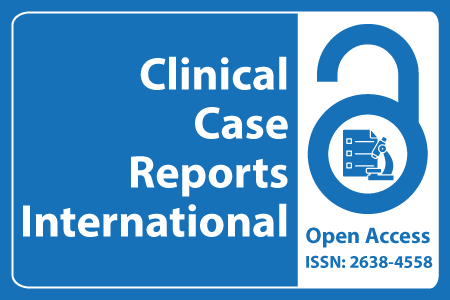
Journal Basic Info
- Impact Factor: 0.285**
- H-Index: 6
- ISSN: 2638-4558
- DOI: 10.25107/2638-4558
Major Scope
- Sports Medicine
- Microbiology
- Oncology
- Preventive Medicine
- Anatomy
- Trauma
- Physiology
- Diabetology
Abstract
Citation: Clin Case Rep Int. 2023;7(1):1505.DOI: 10.25107/2638-4558.1505
Assessing the Role of WT1 in Young Sudden Cardiac Death: The Value of Immunohistochemical Diagnostics
Cămărășan A, Cămărășan O, Buhaș C, Vîlceanu N, Vîlceanu I, Pașcalau A, Pop-Crișan A and Pop O
1Department of Morphological Disciplines, University of Oradea, Bihor County, Romania
2Prof. Dr. Ioan Pușcaș Hospital Șimleu Silvaniei, Sălaj County, Romania
3Department of Surgical Disciplines, University of Oradea, Bihor County, Romania
*Correspondance to: Ovidiu Pop
PDF Full Text Research Article | Open Access
Abstract:
The first responsible for the occurrence of sudden cardiac death in young adults are primary cardiomyopathies and channelopathies. Wilms’ Tumor Protein (WT1) is a suppressor gene meet in embryological cardiac development which seems to reactivate during cardiac injuries. Forty (40) cases were included in the study from Forensic Department belong to the Bihor County. Fragments of heart tissue were collected from sudden cardiac deaths in people aged 18 to 40 years. Those sections of the heart were chosen with macroscopic obvious pathological changes, but also sections of the heart without any type of macroscopic changes. Twenty-four cases had correlations established between the macroscopic and microscopic aspects of acute myocardial infarction. However, in 16 cases the diagnosis of death because of acute myocardial infarction could not be established by identifying macroscopic lesions. In such cases it is important to use the WT1 immunomarker to confirm the diagnosis of ischemic cardiovascular disease. The H score performed, ranged between 30 and 280, showed overexpression of WT1 gene in both groups, the group with macro-/microscopic cardiac lesions and the group without any macro-/microscopic cardiac lesions. All 10 cases included in the control group did not show overexpression of the WT1 gene (score H=0). The analysis of standard errors reveals a homogeneity of the lots included in the study. This fact ensures a statistical relevance of the results obtained. The use of immunohistochemical techniques to highlight the expression of WT1 can help in the definite diagnosis of acute myocardial infarction in the case of deaths shortly after the onset of the disease. In the case of patients belonging to the forensic department, WT1 plays an important role in establishing with certainty the cause of death.
Keywords:
Immunohistochemistry; WT1; Acute myocardial infarction; Sudden Cardiac Death
Cite the Article:
Cămărășan A, Cămărășan O, Buhaș C, Vîlceanu N, Vîlceanu I, Pașcalau A, et al. Assessing the Role of WT1 in Young Sudden Cardiac Death: The Value of Immunohistochemical Diagnostics. Clin Case Rep Int. 2023; 7: 1505.













